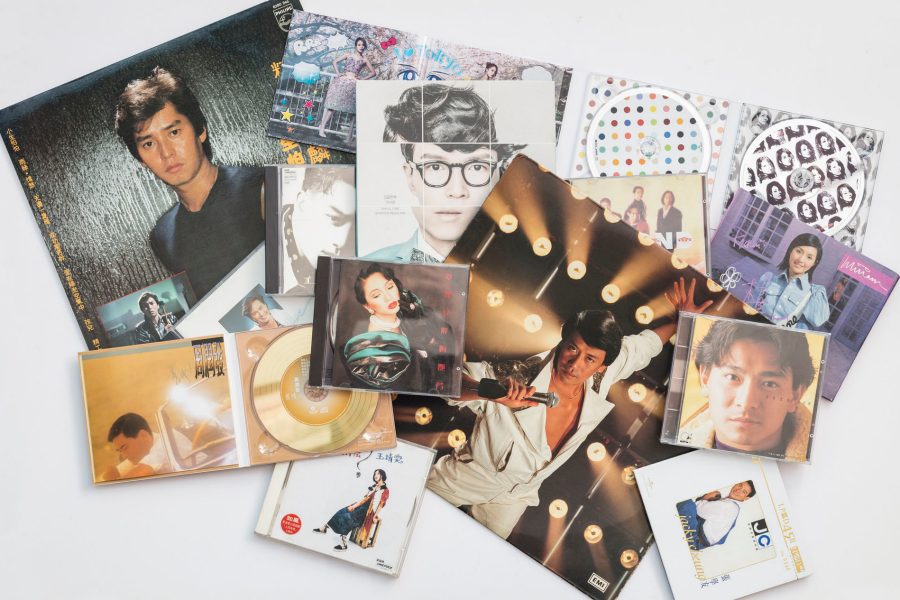In December, Andy Lau, one of the ‘Four Heavenly Kings’ of Hong Kong music, will be performing 20 shows at the Hong Kong Coliseum. When the tickets went on sale in early September, all 60,000 general public tickets were snapped up in hours.
It looks like reports of Cantopop’s death have – yet again – proven to be premature.
So what is Cantopop? Not a genre, as outsiders think. It’s much bigger than that. It’s a music industry that encompasses decades of pop culture history, starting in the 1970s with the Westernisation of local music. It has had its share of ups and downs, a bit like the city that made it: Hong Kong.
I grew up with Cantopop. From the George Lam albums my dad played at home to the Eason Chan songs that my friends and I sing at karaoke, it’s the soundtrack of my life.
Its performers aren’t as hip as the bands taking the stage at Clockenflap this month. But I’m not ashamed to admit that I used to imitate Aaron Kwok’s wrist twist dance in front of the TV. And, absolutely, I was one of those people who bought Andy Lau tickets.
Admittedly, Cantopop isn’t what it was. Album sales plummeted from HK$2.5 billion in 1989 to just HK$200 million last year (though this can be partly attributed to the internet). Its peak was in the 1980s and ’90s, when, alongside Japan, Hong Kong became one of Asia’s pop culture leaders.
In those days, people across Asia not only listened to Cantopop: they aspired to work in it – a bit like K-pop today. Musicians from Taiwan and Singapore broke into the Cantopop industry in search of a piece of the pie.
Like Hong Kong itself, the Cantopop world was, and is, a melting pot of global influences. Before the rise of the internet and global streaming services simplified access to foreign music, record company executives were the tastemakers. During Cantopop’s heyday, they imported hit songs and localised them as Cantonese cover versions (you can hear one of them, Sally Yeh’s cover of Madonna’s Material Girl, in Crazy Rich Asians). Any comprehensive history of Cantopop should list Koji Tamaki, Keisuke Kuwata, Hideaki Tokunaga and the Bee Gees alongside Joseph Koo, Sam Hui, Michael Lai and Anthony Lun as Cantopop’s greatest composers.
Many will remember the ’80s for super idols Leslie Cheung, Anita Mui, Danny Chan and Alan Tam. But thanks to high-profile talent competitions and a huge entertainment ecosystem in which actors sang and vice versa, it also saw singers that shone just as quickly as they faded away (I still treasure my copy of Chow Yun-fat’s second and final album). Names such as Samantha Lam, Agnes Chiang, Terence Tsoi, Cally Kwong and Connie Mak are virtual strangers to millennials, but their hits still get airplay on local radio stations during late-night music programmes.
Cheung and Tam stepping back from the spotlight in the ’90s gave way to the rise of Jacky Cheung, Andy Lau, Leon Lai and Aaron Kwok – four very different pop stars clumped together by local media as the ‘Four Heavenly Kings’. Not all of them are great musicians by any means – Jacky Cheung is the only one who succeeded on vocal talents – but few Hong Kong pop stars have enjoyed the same longevity as this quartet.
How is it possible Andy Lau concerts can still sell out in mere hours in 2018? Why do we still look back fondly at the golden age of Cantopop but don’t show the same support to this generation of Hong Kong musicians? The continuing love for ’80s and ’90s Cantopop feels like an act of nostalgia.
It’s easier to look at the period through rose-coloured Ray-Bans and shrug a heavily-padded shoulder at the current, much diminished local music industry.
But while the numbers may be smaller and the kings’ thrones are vacant, there’s far more diversity and creativity around: check out the likes of Ivana Wong, Khalil Fong, Killersoap, Aga, Supper Moment and Eman Lam. Hong Kong pop, like the city, has plenty of gas left in the tank.
Related stories
Hong Kong travel information
- China – the Chinese Mainland, Hong Kong SAR, Macao SAR and Taiwan Region
- Hong Kong SAR - English
- Chinese Mainland (China) - English
- Taiwan, China - English
- 香港特別行政區 - 繁體中文
- 中国內地 - 简体中文
- 中國台灣 - 繁體中文
- Africa
- South Africa - English
- Asia
- Bangladesh - English
- Korea - English
- Singapore - English
- Cambodia - English
- 한국 - 한국어
- Sri Lanka - English
- India - English
- Malaysia - English
- Thailand - English
- Indonesia - English
- Maldives - English
- ประ�เทศไทย - ภาษาไทย
- Indonesia - Bahasa Indonesia
- Myanmar - English
- Vietnam - English
- Japan - English
- Nepal - English
- Việt Nam - tiếng Việt
- 日本 - 日本語
- Philippines - English
- Australasia
- Australia - English
- New Zealand - English








